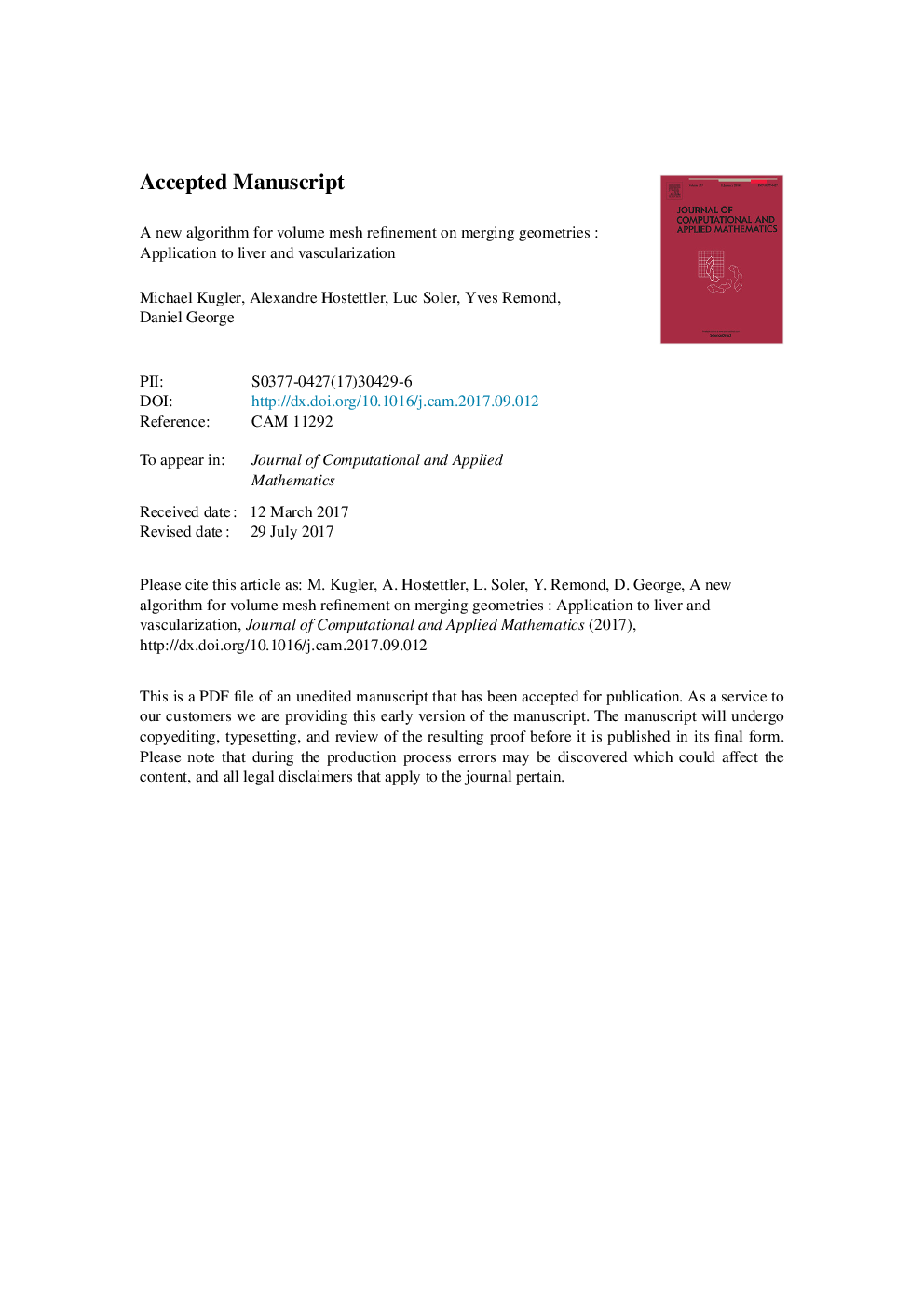| Article ID | Journal | Published Year | Pages | File Type |
|---|---|---|---|---|
| 5776067 | Journal of Computational and Applied Mathematics | 2018 | 24 Pages |
Abstract
We introduce a new algorithm to merge several overlapping independent volumic meshes. Considering the different treated meshes, the biggest one is defined as the “main-mesh”, while the other ones are defined as the “sub-meshes”, and will be treated iteratively in order to provide a new unique mesh entity with a specific node distribution integrating the initial meshes geometry and precision. The “sub-meshes” are geometrically localised within the “main-mesh” into which the associated elements are refined. The proposed algorithm stops when the refined size of the “main-mesh” elements is close to the original “sub-mesh” elements size. The present algorithm preserves the mesh quality, initial geometry and precision of the different meshes, and optimises the number of elements produced, in order to keep a further Finite Element Model (FEM) calculation time as low as possible. The algorithm efficiency is validated on simple geometries and real life cases for medical applications and compared with refinement using the Brute Force Approach (BFA). Results indicate that only 3 iterative refinement steps are necessary to produce a new mesh presenting good integrated geometrical precision compared with BFA while optimising the calculation time by reducing the number of elements by 90%.
Related Topics
Physical Sciences and Engineering
Mathematics
Applied Mathematics
Authors
Michael Kugler, Alexandre Hostettler, Luc Soler, Yves Remond, Daniel George,
